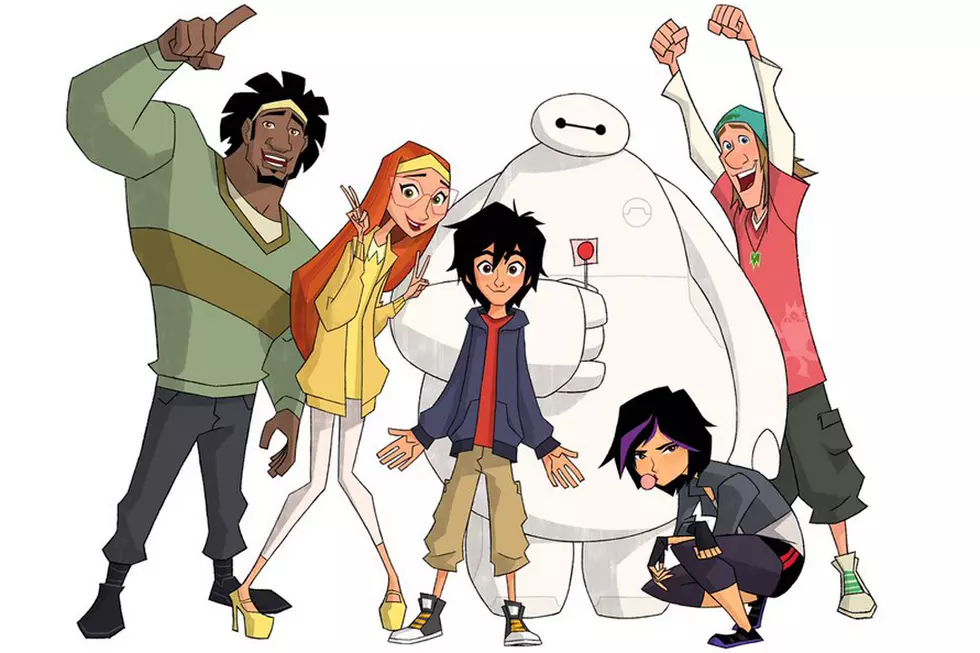![‘The Noble Approach’ Documents The Life And Legacy Of Animation Artist Maurice Noble [Review]](http://townsquare.media/site/622/files/2014/09/NobleCover1.jpg?w=980&q=75)
‘The Noble Approach’ Documents The Life And Legacy Of Animation Artist Maurice Noble [Review]

This is something of a golden age for pop culture-themed art books. It seems like every week, a new volume comes on the market that illuminates some aspect of the history of popular art. In fact, there's so many great titles out there right now that it can be tough to figure out which are worth your time -- so we figured it would be a good idea to shine the ComicsAlliance spotlight on a few of the best things we've recently read.
The Noble Approach: Maurice Noble And The Zen Of Animation Design is a sweeping retrospective of Maurice Noble's art and legacy. It also offers a thought-provoking treatise on principles of animation design, compiled by author Tod Polson from Noble's notes.
Maurice Noble is a name that draws blank stares from most people, but he's a legend among animators and cartoon buffs – he art-directed and laid out many classic Merry Melodies and Looney Tunes cartoons, including the legendary What's Opera, Doc?, Duck Amuck, and Duck Dodgers In The 24½th Century; he defined the abstract-modernist style of the Road Runner series; and he mentored a number of creators who have gone on to great acclaim in animation, cartooning, and other fields.
Noble Approach author Tod Polson was a student, friend, and collaborator of Noble's, and he uses his closeness to his subject to great advantage in this volume, giving a thorough overview of the man's life and artistic philosophies. Polson offers insights on many aspects of Noble's career: his early days at Disney, working on Snow White, Bambi, Dumbo, and other classics; his work with Chuck Jones and Michael Maltese; and his years teaching and advising. Much of the text is compiled from Noble's own words, and the ideas and imagery on each page combine to enlighten, intrigue, and inspire.
Noble truly came into his own while working at Warner Bros. in the 1950s, and this volume devotes plenty of space to covering that era, by reproducing thumbnails, backgrounds, and concept sketches galore, and giving behind-the-scenes glimpses at the production of some of the best-regarded cartoons ever made.
Though I read the book cover-to-cover over the course of an evening, I've found myself returning to flip through again as I process some of the information and ideas within. The distorted still-lifes and surrealist landscapes in these pages both revive my memories of Saturday morning cartoons and enhance my appreciation of them.
Noble sought to tailor suitable approaches for each of his projects. His use of shape and color distilled the essential elements of a production into a unified visual aesthetic, and his designs – beautiful in their own right – always complemented the stories and characters at the core of the cartoons.
Not only is this book informative and thought-provoking, it's also gorgeous. Hundreds of sketches and paintings are reproduced in spectacular quality; elements that originally served as backdrops are now the focus of attention, giving new perspective on the artistry that went into these classic bursts of animated mayhem.
Though there's plenty of involved commentary on theory and approach throughout the book, it's an accessible and enjoyable read, focusing on Maurice Noble himself, and not only the mechanics of his work. In keeping with the man's own teachings, it uses visuals and ideas in service to the story, and does so with simple elegance, style, and a hint of humor.
Some images via Tod Polson's Noble Approach blog.
More From ComicsAlliance









